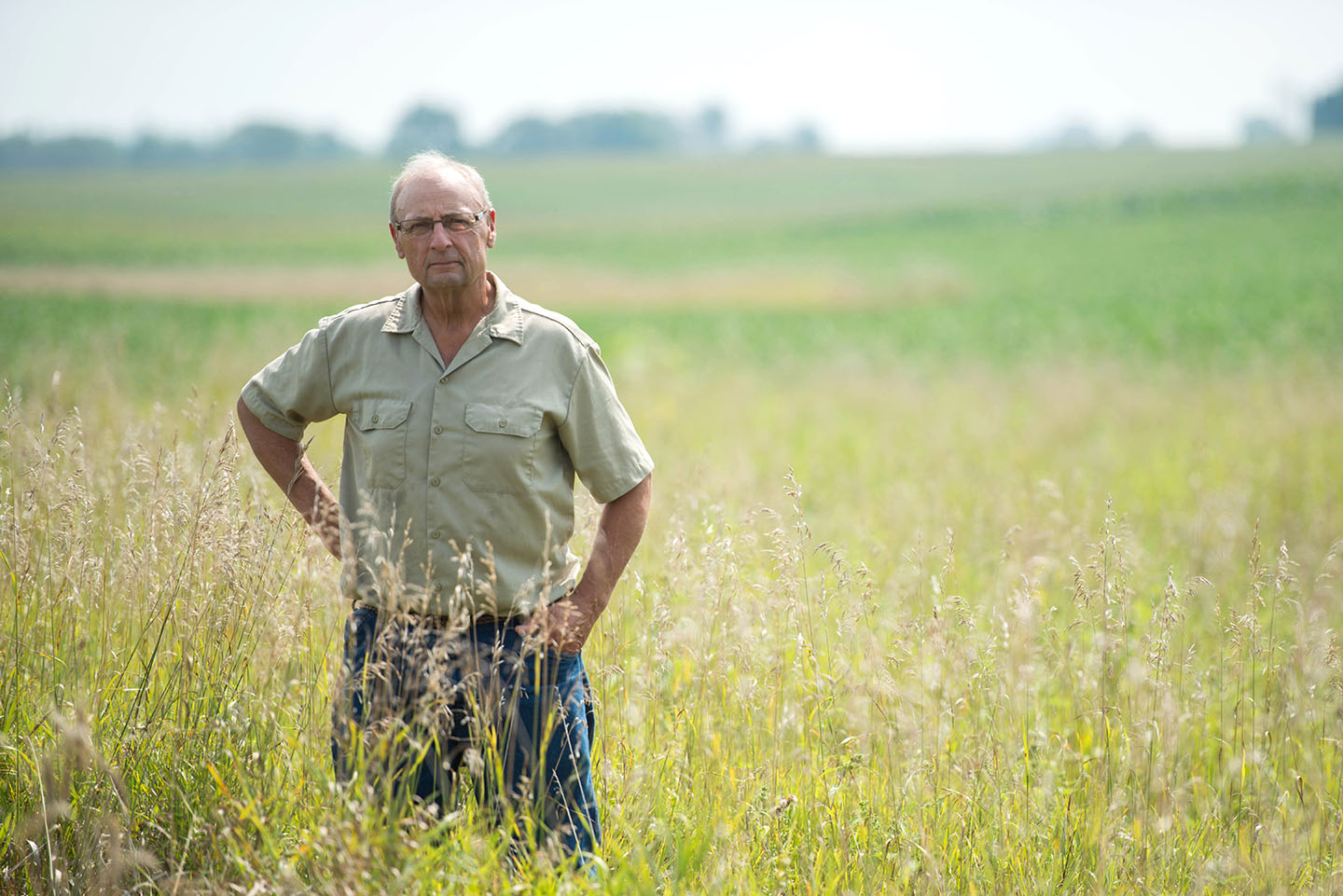
(Photo: Iowa Soybean Association)
Working toward healthier soil
February 7, 2022 | Kriss Nelson
Wayne Fredericks is on a mission to improve the soil health on his farms near Osage.
“Soil health is the basis for good production,” the past ISA president says. “It’s also the basis of good water quality and air quality.”
Fredericks has been a key collaborator with the Iowa Soybean Association’s (ISA) Research Center for Farming Innovation (RCFI), working to not only improve soils on his farm but to also add research that collectively helps all soybean farmers.
ISA’s RCFI conducts ongoing collaborative research with Iowa farmers to find practices that improve soil health profitably.
Through various work with RCFI and other partners, Fredericks has seen economic and agronomic returns on investment from his conservation practices.
After what Fredericks refers to as an “accidental conservation adjustment” following the early freeze in 1991, he began no-tilling his soybean acres and converted from conventional tillage to strip-tilling corn 10 years later.
The Mitchell County farmer says the economics of a system, which was also the building block to a healthier soil profile, happened almost instantly.
“We had the yields. We saw a tremendous savings of equipment costs and labor,” he says. “But we also changed the soil structure, soil health and soil quality.”
Cover crops
When Fredericks served as ISA president in 2016, and during that time, he did everything he could to learn about raising cover crops. He led by example, diving 100% into the practices.
“I call cover crops the most dramatic step in conservation since the 1970s when we started to get rid of the plow,” he says.
Prior to raising cover crops, he took water samples on his farm. Since incorporating cover crops on his farm, Fredericks has seen a 35% reduction in nitrates found in his tile line samples.
Organic matter
Organic matter is the foundation of soil health. It increases soil water holding capacity, minerals and is a source of food for various plant growth promoting fungi and bacteria.
“Most cultivated soils in Iowa have lost around 50% of their original organic matter,” says Scott Nelson, ISA senior field services program manager. “We can only imagine what Iowa crops would yield if we had our original base levels of organic matter. Some experts estimate our yields would be 50% greater.”
From soil samples pulled on Frederick’s farms in 1984, the organic matter ranged from 2.3% to 3.3%. In 2015, soil samples showed the organic matter had improved to a range of 4.3% to 6.1%.
These tests were conducted before Frederick’s inception of a cover crop system.
“That is just from the reduction of tillage,” he says. “Studies have shown there could be an increase of one-tenth of 1% per year of organic matter by simply discontinuing tillage.”
One RCFI project characterizes the long-term benefit of continuous cover cropping at 16 locations of on-farm research. In its five years of existence, the program has shown a tenth of a percent increase in organic matter in the top six inches of soil after five years.
At soil depths of 6 to 12 inches, the increase in organic matter after continuous cover cropping is 0.3%. Preliminary results show the increase in organic matter at deeper soil profiles, which can dramatically improve the cropping system.
Final research results will be released later.
Rainfall
More frequent significant rainfall events, which often caused flooding, was an ‘aha!’ moment for Fredericks. He realized his soils need to be able to handle the extreme variability of those rain events.
“It affects what happens downstream, not only with water quality but water quantity,” he says. “I realized if I make my soils more absorbent, it benefits those downstream as well. This is where we are proving the resiliency of these farming systems once we improve the soil health.”
Fredericks saw the proof through a study which compiled 16 years of data from his farms in conjunction with Dr. Jerry Hatfield and his team at USDA Agriculture Research Service.
The results showed improved soil health, which increased plant growth and the production per unit of water supplied to the field through increased infiltration of the soil and storage.
In Fredericks’ fields, water use efficiency in soybeans and corn provided more bushels per inch of rainfall. Part of the credit could be given to genetics, but Fredericks feels this far exceeds the seed.
Improved water use efficiency showed a farm average of 9.55 bushels per inch of rain in corn in 2020, more than double the efficiency (3.9 bushels per inch) in 2004.
Results have shown 2.92 bushels per inch of rain for soybeans in 2020 versus 1.9 bushels per inch in 2005.
“It’s the soil health that is improving water use efficiency,” he says. “You have good cover and a good open porous space to absorb and hold rainfall.”
Better soil health is also a tool to help manage moisture and overall productivity in the spring.
“It helps to plant in better soil conditions. Our air exchange is good – we don’t see yellow corn anymore,” says Fredericks.
Back